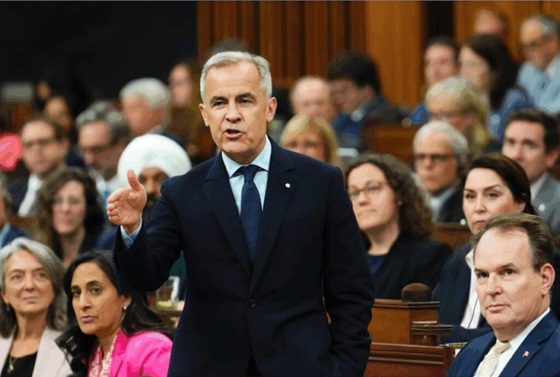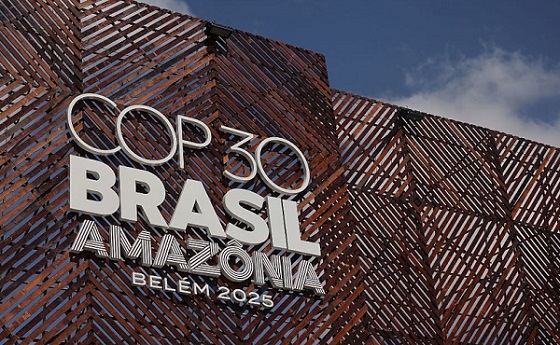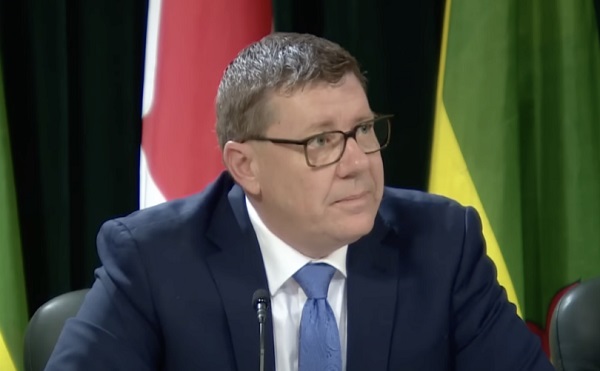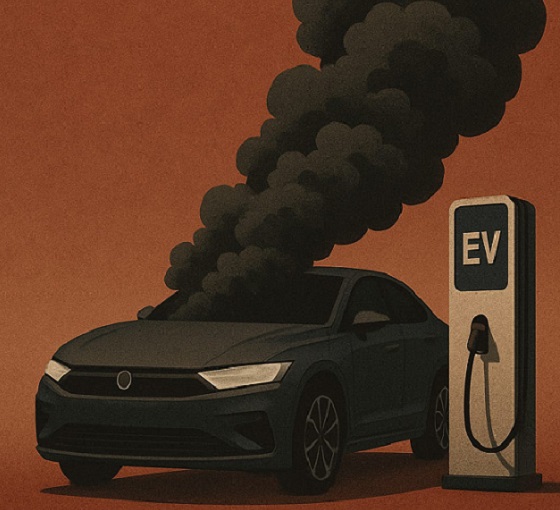Energy
DAVID BLACKMON: Norway Provides An Object Lesson On How Not To Make Energy Policy


From the Daily Caller News Foundation
By David Blackmon
“It’s an absolutely sh*t situation.” That is the assessment of Norway’s energy minister, Terje Aasland, about his country’s electricity costs rising to record levels due to its exports of power to the United Kingdom, Germany, Denmark and other European countries.
It is an outcome that many warned the Norwegian government would come about as the decisions were made to build the interconnects to export power into the European Union and the UK. Those critics were of course ignored as those in charge of Norway’s fortunes at the time felt compelled to genuflect to the demands of the EU and other globalist organizations.
Norway derives the vast majority of its electricity from hydropower, which currently provides 90% of the country’s power generation. Most of the remainder comes from wind power, and the nation enjoys a large excess of generating capacity on most days. Thus, all other factors being equal, it made some financial sense to establish those interconnects to sell the surplus into other countries.
But it only made sense when those other countries were taking care to ensure the continuing health and adequacy of their own electric grids. That certainly has not been the case in either the UK or Germany, whose governments have in recent years chosen to discard a former wealth of reliable baseload capacity provided by coal and nuclear plants in favor of relying too heavily on intermittent, weather-dependent wind and solar.
Now, when the wind stops blowing and the sun isn’t shining, those customers of Norwegian power exports drain the host country’s surplus, causing the extremely high energy costs to flow back upstream, hitting Norwegians with abnormally high utility bills. It all came to a head this week when low wind speeds, combined with abnormally cold temperatures on the European mainland, caused power rates in Norway to spike to as high as €1.12 ($1.18) per kilowatt hour (kwh).
By comparison, the average electricity rate per kwh in New York is around 22 cents, while Texans typically pay around 15 cents per kwh. What that price spike meant for Norwegians on December 12 is that taking a 5-minute warm shower would have cost them $5. Doing the same in Texas would have cost around 16 cents.
Naturally, public outrage in Norway over these needlessly high electricity rates is now causing policymakers there to run for political cover. The Financial Times reports that both the ruling leftwing Labour Party and conservative Progress Party are now making plans to campaign next year on platforms to limit or end the export of electricity via these international interconnections.
That is a prospect that no doubt sparks fear in the hearts of the central planners in both Germany and the UK, where electricity imports from Norway play a central role in their own emissions reduction plans. Those plans involve the willful destruction of reliable baseload power stations and forcing power costs to dramatically increase, which in turn results in heavy industries like steelmaking and other manufacturing to leave the country. In that way, these governments are essentially exporting their emissions to China, whose own government is only too happy to serve as home to these heavy industries and power them with the hundreds of coal-fired power plants they build each year.
California Gov. Gavin Newsom and his fellow Democrats have pursued essentially the same strategies in California in this century, with predictable results: Californians pay among the highest power rates in the United States as their power grid has become overloaded with intermittent generation and increasingly reliant on imports from other states. Rather than exporting its emissions to China, California exports them to Nevada and Utah and other U.S. states.
The Biden administration has attempted to take the entire country down this same economically ruinous path for the past four years. Fortunately, voters awakened just in time this year to head off the most damaging impacts now being seen in Germany and the UK.
For Norway, is this an example of the law of unintended consequences setting in? Sure, to some extent. But it is also a clear example of entirely foreseeable consequences stemming from poor policymaking by multiple national governments flowing across borders. This “sh*t situation” was all avoidable, and frankly should have been.
David Blackmon is an energy writer and consultant based in Texas. He spent 40 years in the oil and gas business, where he specialized in public policy and communications.
Energy
Liberals Twisted Themselves Into Pretzels Over Their Own Pipeline MOU

From Energy Now
By Margareta Dovgal
Playing politics with pipelines is a time-honored Canadian tradition. Recent events in the House of Commons offered a delightful twist on the genre.
The Conservatives introduced a motion quoting the Liberals’ own pipeline promises laid out in the Memorandum of Understanding (MOU) with Alberta, nearly verbatim. The Liberals, true to form, killed it 196–139 with enthusiastic help from the NDP, Bloc, and Greens.
We all knew how this would end. Opposition motions like this never pass; no government, especially not one led by Mark Carney, is going to let the opposition dictate the agenda. There’s not much use feigning outrage that the Liberals voted it down. The more entertaining angle has been watching closely as Liberal MPs twist themselves into pretzels explaining why they had to vote “no” on a motion that cheers on a project they claim to support in principle.
Liberal MP Corey Hogan dismissed the motion as “game-playing” designed to “poke at people”.
And he’s absolutely right to call it a “trap” for the Liberals. But traps only work when you walk into them.
Indigenous Services Minister Mandy Gull-Masty deemed the motion an “immature waste of parliamentary time” and “clearly an insult towards Indigenous Peoples” because it didn’t include every clause of the original agreement. Energy Minister Tim Hodgson decried it as a “cynical ploy to divide us” that “cherry-picked” the MOU.
Yet the prize for the most tortured metaphor goes to the prime minister himself. Defending his vote against his own pipeline promise, Carney lectured the House that “you have to eat the entire meal, not just the appetizer.”
It’s a clever line, and it also reveals the problem. The “meal” Carney is serving is stuffed with conditions. Environmental targets or meaningful engagement with Indigenous communities aren’t unrealistic asks. A crippling industrial carbon price as a precondition might be though.
But the prime minister has already said the quiet part out loud.
Speaking in the House a few weeks ago, Carney admitted that the agreement creates “necessary conditions, but not sufficient conditions,” before explicitly stating: “We believe the government of British Columbia has to agree.”
There is the poison pill. Handing a de facto veto to a provincial government that has spent years fighting oil infrastructure is neither constitutionally required nor politically likely. Elevating B.C.’s “agreement” to a condition, which is something the MOU text itself carefully avoids doing, means that Carney has made his own “meal” effectively inedible.
Hodgson’s repeated emphasis that the Liberal caucus supports “the entire MOU, the entire MOU” only reinforces this theory.
This entire episode forces us to ask whether the MOU is a real plan to build a pipeline, or just a national unity play designed to cool down the separatist temperature in Alberta. My sense is that Ottawa knew they had to throw a bone to Premier Danielle Smith because the threat of the sovereignty movement is gaining real traction. But you can’t just create the pretense of negotiation to buy time.
With the MOU getting Smith boo’ed at her own party’s convention by the separatists, it’s debatable whether that bone was even an effective one to throw.
There is a way. The federal government has the jurisdiction. If they really wanted to, they could just do it, provided the duty to consult with and accommodate Indigenous peoples was satisfied. Keep in mind: no reasonable interpretation equates Section 35 of the Charter to a veto.
Instead, the MOU is baked with so many conditions that the Liberals have effectively laid the groundwork for how they’re going to fail.
With overly-hedged, rather cryptic messaging, Liberals have themselves given considerable weight to a cynical theory, that the MOU is a stalling tactic, not a foundation to get more Canadian oil to the markets it’s needed in. Maybe Hodgson is telling the truth, and caucus is unified because the radicals are satisfied that “the entire MOU” ensures that a new oil pipeline will never reach tidewater through BC.
So, hats off to the legislative affairs strategists in the Conservative caucus. The real test of Carney’s political power continues: can he force a caucus that prefers fantasy economics into a mold of economic literacy to deliver on the vision Canadians signed off on? Or will he be hamstrung trying to appease the radicals from within?
Margareta Dovgal is managing director of Resource Works Society.
Daily Caller
Paris Climate Deal Now Decade-Old Disaster


From the Daily Caller News Foundation
By Steve Milloy
The Paris Climate Accord was adopted 10 years ago this week. It’s been a decade of disaster that President Donald Trump is rightly trying again to end.
The stated purpose of the agreement was for countries to voluntarily cut emissions to avoid the average global temperature exceeding the (guessed at) pre-industrial temperature by 3.6°F (2°C) and preferably 2.7°F (1.5°C).
Since December 2015, the world spent an estimated $10 trillion trying to achieve the Paris goals. What has been accomplished? Instead of reducing global emissions, they have increased about 12 percent. While the increase in emissions is actually a good thing for the environment and humanity, spending $10 trillion in a failed effort to cut emissions just underscores the agreement’s waste, fraud and abuse.
As a nonprofit, we are dependent on the generosity of our readers.
Please consider making a small donation of any amount here.
Thank you!
But wasting $10 trillion is only the tip of the iceberg.
The effort to cut emissions was largely based on forcing industrial countries to replace their tried-and-true fossil fuel-based energy systems with not-ready-for-prime-time wind, solar and battery-based systems. This forced transition has driven up energy costs and made energy systems less reliable. The result of that has been economy-crippling deindustrialization in former powerhouses of Germany and Britain.
And it gets worse.
European nations imagined they could reduce their carbon footprint by outsourcing their coal and natural gas needs to Russia. That outsourcing enriched Russia and made the European economy dependent on Russia for energy. That vulnerability, in turn, and a weak President Joe Biden encouraged Vladimir Putin to invade Ukraine.
The result of that has been more than one million killed and wounded, the mass destruction of Ukraine worth more than $500 billion so far and the inestimable cost of global destabilization. Europe will have to spend hundreds of billions more on defense, and U.S. taxpayers have been forced to spend hundreds of billions on arms for Ukraine. Putin has even raised the specter of using nuclear weapons.
President Barack Obama unconstitutionally tried to impose the Paris agreement on the U.S. as an Executive agreement rather than a treaty ratified by the U.S. Senate. Although Trump terminated the Executive agreement during his first administration, President Joe Biden rejoined the agreement soon after taking office, pledging to double Obama’s emissions cuts pledge to 50 percent below 2005 levels by 2030.
Biden’s emissions pledge was an impetus for the 2022 Inflation Reduction Act that allocated $1.2 trillion in spending for what Trump labeled as the Green New Scam. Although Trump’s One Big Beautiful Bill Act reduced that spending by about $500 billion and he is trying to reduce it further through Executive action, much of that money was used in an effort to buy the 2024 election for Democrats. The rest has been and will be used to wreck our electricity grid with dangerous, national security-compromising wind, solar and battery equipment from Communists China.
Then there’s this. At the Paris climate conference in 2015, U.S. Secretary of State John Kerry stated quite clearly that emissions cuts by the U.S. and other industrial countries were meaningless and would accomplish nothing since the developing world’s emissions would be increasing.
Finally, there is the climate realism aspect to all this. After the Paris agreement was signed and despite the increase in emissions, the average global temperature declined during the years from 2016 to 2022, per NOAA data.
The super El Nino experienced during 2023-2024 caused a temporary temperature spike. La Nina conditions have now returned the average global temperature to below the 2015-2016 level, per NASA satellite data. The overarching point is that any “global warming” that occurred over the past 40 years is actually associated with the natural El Nino-La Nina cycle, not emissions.
The Paris agreement has been all pain and no gain. Moreover, there was never any need for the agreement in the first place. A big thanks to President Trump for pulling us out again.
Steve Milloy is a biostatistician and lawyer. He posts on X at @JunkScience.
-

 Alberta2 days ago
Alberta2 days agoAlberta’s huge oil sands reserves dwarf U.S. shale
-

 Indigenous2 days ago
Indigenous2 days agoResidential school burials controversy continues to fuel wave of church arsons, new data suggests
-

 Health2 days ago
Health2 days agoSaskatchewan woman approved for euthanasia urged to seek medical help in Canada rather than US
-

 International2 days ago
International2 days agoFBI didn’t think it had cause to raid Trump but DOJ did it anyway
-

 Daily Caller2 days ago
Daily Caller2 days agoParis Climate Deal Now Decade-Old Disaster
-

 Business1 day ago
Business1 day agoOttawa Pretends To Pivot But Keeps Spending Like Trudeau
-

 International1 day ago
International1 day agoBondi Beach Shows Why Self-Defense Is a Vital Right
-

 Energy1 day ago
Energy1 day agoLiberals Twisted Themselves Into Pretzels Over Their Own Pipeline MOU






